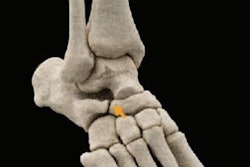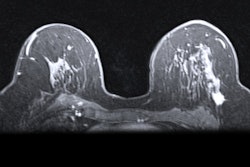
The Choosing Wisely initiative was designed to reduce unnecessary medical procedures. But a new analysis of the project's impact on two imaging scenarios -- staging for prostate and breast cancer -- raises questions about its effectiveness.
In a presentation at the recent virtual meeting of the National Comprehensive Cancer Network (NCCN), researchers from the University of Rhode Island led by Ami Vyas, PhD, found that use of unnecessary imaging in the two scenarios did indeed drop after Choosing Wisely guidelines were published in 2012 by the American Society of Clinical Oncology (ASCO).
But use of imaging for both scenarios was already dropping prior to 2012, and the decline did not accelerate after the guidelines were published.
Choosing Wisely is a campaign launched by the American Board of Internal Medicine Foundation about a decade ago that asked physician organizations such as ASCO to identify five tests or procedures commonly used in practice, the validity of which was not supported by high-level evidence.
ASCO's contribution was a list of five practices, three of which relate to imaging, that were commonplace in oncology, despite the absence of evidence supporting their clinical value. Two of the three included the following:
- PET, CT, and radionuclide bone scans in the staging of early-stage prostate cancer at low risk for metastasis
- PET, CT and radionuclide bone scans in the staging of early-stage breast cancer at low risk for metastasis
ASCO recommended that neither practice should be performed. But what impact has the recommendation actually had on clinical practice?
"There is limited information available about the impact of the Choosing Wisely initiative on the use of staging imaging procedures in patients with early-stage breast cancer, especially older patients," Vyas said. "Similarly, there is a dearth of data showing the impact of the Choosing Wisely initiative on the use of staging imaging procedures in older patients with early-stage prostate cancer."
Vyas and colleagues looked at data dating from 2007 to 2015 from the Surveillance, Epidemiology, and End Results (SEER)-Medicare database, identifying 84,606 women ages 66 and older at the first primary diagnosis of stage 0 to stage II incident breast cancer during 2007 to 2015. They used the same database from the same time period to identify 55,705 men ages 66 and older at the first primary diagnosis of incident prostate cancer who had a Gleason score of 6 or less and a prostate-specific antigen (PSA) level of 10 ng/ml or less.
The proportion of patients who had at least one claim for PET, CT, or radionuclide bone scans in the three months prior to and three months following cancer diagnosis were identified for the period before publication of the ASCO Choosing Wisely recommendations in May 2012, and the postpublication period, after May 2012.
In an unadjusted analysis, investigators observed a decline in imaging in the setting of both early-stage breast cancer and early-stage prostate cancer after the ASCO recommendations were published, Vyas noted.
| Change in imaging use for cancer staging following ASCO Choosing Wisely guidelines | ||
| Prior to Choosing Wisely | After Choosing Wisely | |
| Early-stage breast cancer | 32.2% | 26.8% |
| Early-stage prostate cancer | 50.4% | 43.7% |
But was Choosing Wisely really responsible for the decline? To find out, Vyas et al then performed an analysis of the rate of decline both before and after the guidelines were issued.
They found that usage rates of the imaging techniques in question had already been declining prior to the guidelines being issued, raising questions about whether Choosing Wisely was really responsible for the drop after 2012.
"Our findings highlight the ongoing challenge of reducing unnecessary medical procedures in women with breast cancer, which may be partly contributing to higher costs of breast cancer care," said Vyas.
Indeed, the data on imaging in the setting of early-stage prostate cancer was more encouraging than imaging data on early-stage breast cancer.
"We can conclude that the Choosing Wisely recommendations coincided with the decline in unnecessary staging imaging in older men with early-stage prostate cancer," said Vyas, but described the decline in the use of imaging as 'slow.' "



















